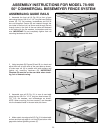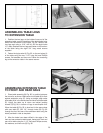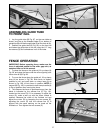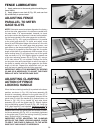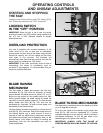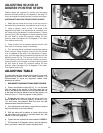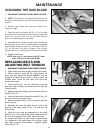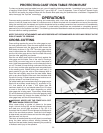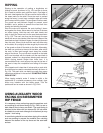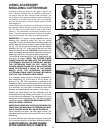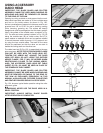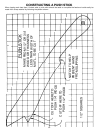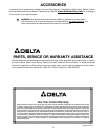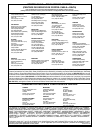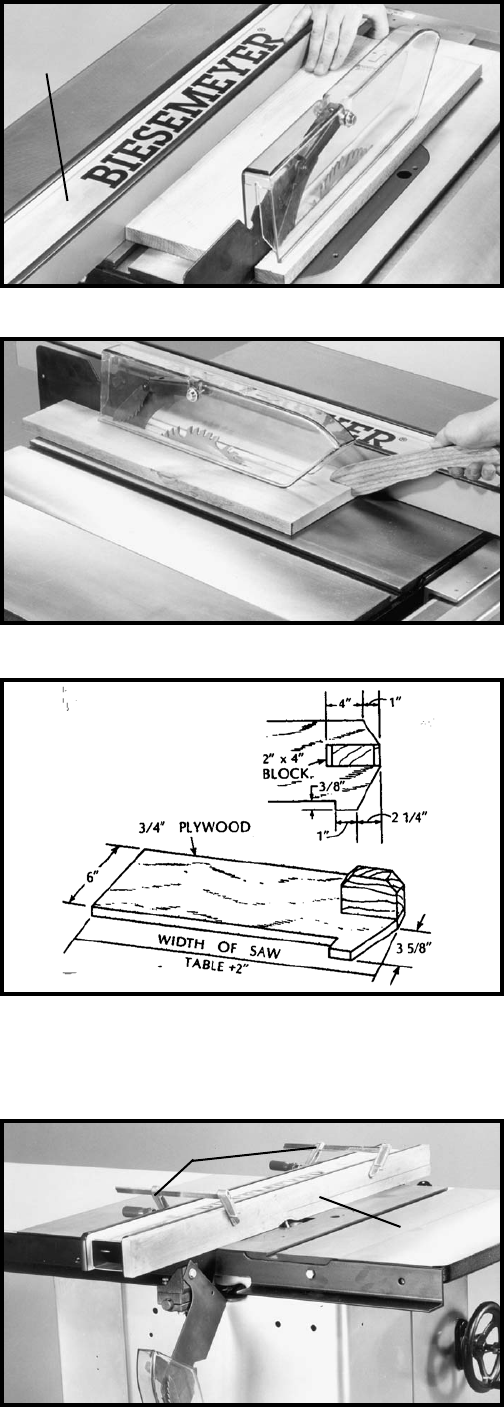
34
RIPPING
Ripping is the operation of making a lengthwise cut
through a board, as shown in Fig. 123, and the rip fence
(A) is used to position and guide the work. One edge of
the work rides against the rip fence while the flat side of
the board rests on the table. Since the work is pushed
along the fence, it must have a straight edge and make
solid contact with the table. The saw guard must be used.
The guard has anti-kickback fingers to prevent wood
kickback, and a splitter to prevent the wood kerf from
closing and binding the blade.
Start the motor and advance the work holding it down
and against the fence. Never stand in the line of the saw
cut when ripping. Hold the work with both hands and
push it along the fence and into the saw blade as shown
in Fig. 123. The work can then be fed through the saw
blade with one or two hands. After the work is beyond the
saw blade and anti-kickback fingers, the hand is removed
from the work. When this is done the work will either stay
on the table, tilt up slightly and be caught by the rear end
of the guard or slide off the table to the floor. Alternately,
the feed can continue to the end of the table, after which
the work is lifted and brought back along the outside
edge of the fence. The cut-off stock remains on the table
and is not touched with the hands until the saw blade is
stopped, unless it is a large piece allowing safe removal.
When ripping boards longer than three feet, it is
recommended that a work support be used at the rear of
the saw to keep the workpiece from falling off the saw
table.
If the ripped work is less than 4 inches wide, a push stick
should always be used to complete the feed, as shown in
Fig. 124. The push stick can easily be made from scrap
material as explained in the section “CONSTRUCTING A
PUSH STICK.”
When ripping material under 2 inches in width, a flat
pushboard is a valuable accessory since ordinary type
sticks may interfere with the blade guard. That flat
pushboard can be made as shown in Fig. 124A.
Fig. 123
Fig. 124
A
Fig. 124A
USING AUXILIARY WOOD
FACING ON BIESEMEYER
RIP FENCE
It is necessary when performing special operations such
as moulding to add wood facing (A) Fig. 124B, to one or
both sides of the rip fence, as shown. The wood facing is
attached to the fence with two clamps (B). 3/4 inch stock
is suitable for most work although an occasional job may
require 1 inch facing.
A wood facing should be used when ripping thin material
such as paneling to prevent the material from catching
between the bottom of the rip fence and the saw table
surface.
Fig. 124B
B
A



